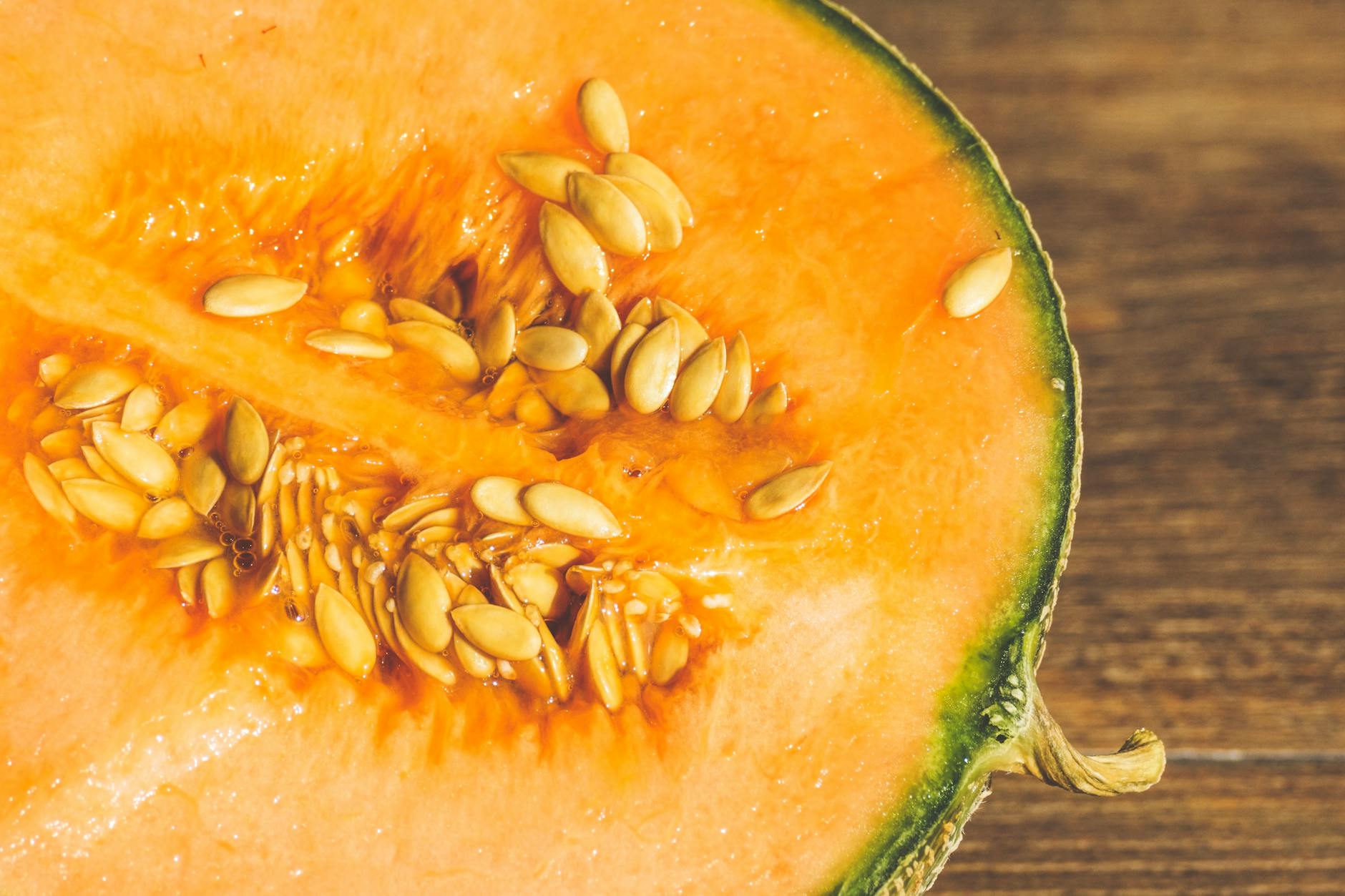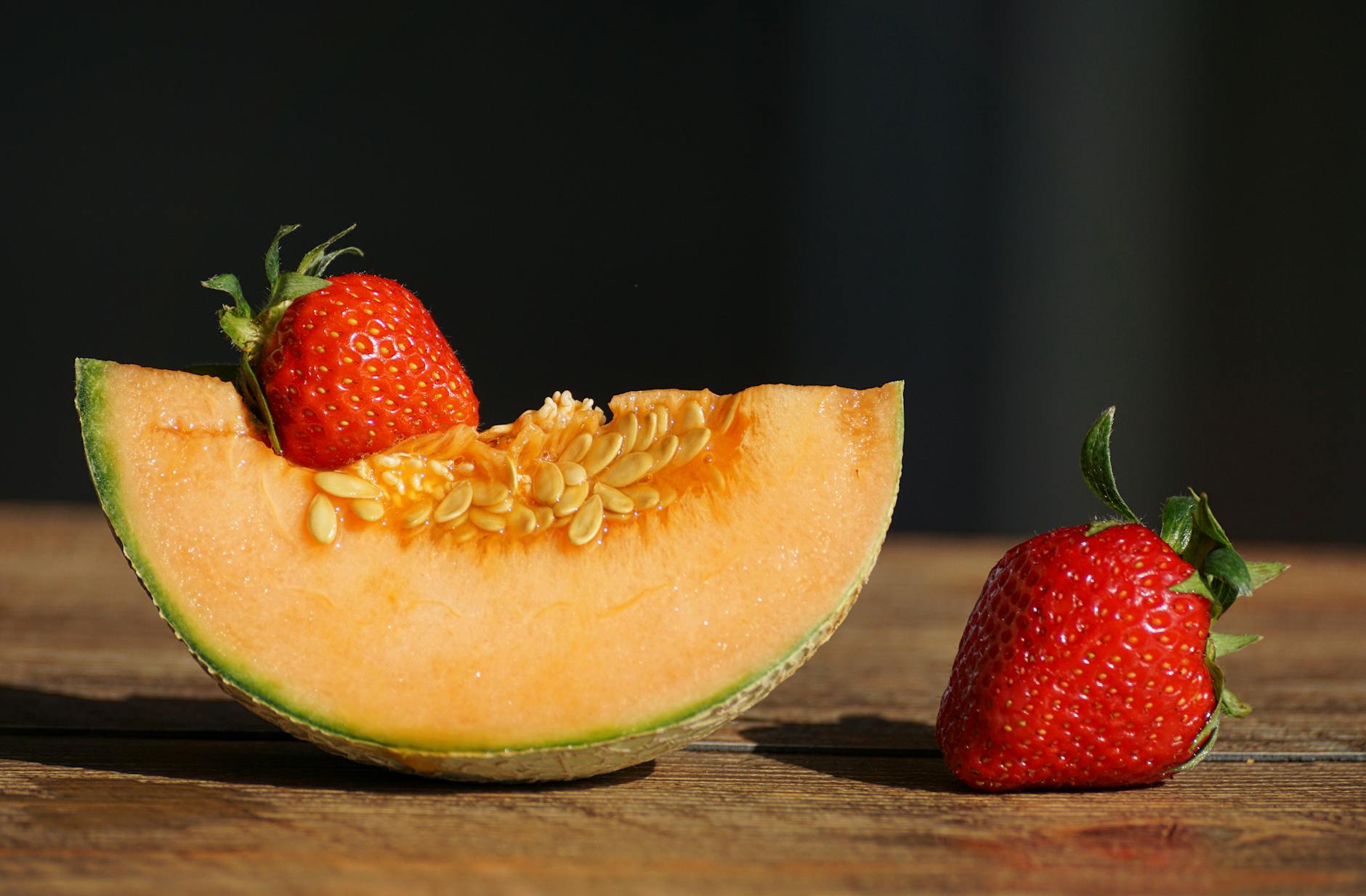It’s sometimes hard to find real sweet honeydew melon on the market. So growing honeydew from seeds in the comfort of your home will definitely be rewarding. Get growing honeydew melon with this easy and foolproof grow guide!
A Complete Guide To Growing Honeydew Melon From Seeds
We’ve recently enjoyed a honeydew melon admittedly from the market. So the gardener in me just couldn’t help saving the seeds, thinking “I could grow these kitchen food scraps“. So now I’m on my way to it and super excited for real fresh and organic honeydew melon. You too can save those honeydew melon seeds you’re enjoying now. Let’s learn how to grow honeydew melon with this complete yet foolproof growing guide!
About Honeydew Melon
Are you wondering what’s the difference between the cantaloupe and the honeydew? Although they’re practically sisters, honeydew has this distinct pale green to greenish yellow color. You’ll find the skin texture smooth compared to melon’s rough netted skin and ridges. Honeydew is also sweeter than the cantaloupe, hence the name. Its taste is reminiscent of a moist pear and just lovely in fruit mixes.
What You Need To Know When Growing Honeydew Melon
Honeydew melons are some of the easiest fruits to grow from seeds. Unlike seeds from fruits trees, say apples and apricots, you can enjoy honeydew in as early as 65 to 75 days. Growing honeydew melons from seeds will require full sun. It’s good to know they don’t tolerate high humidity and frost. They can even be some of the drought-tolerant crops. Depending on your hardiness zones, you can start seeds in late spring when the nights are warmer. But you can start earlier or later by growing them in raised beds with mulches and protection.
How To Grow Honeydew Melon From Seeds
Starting Honeydew Melon Seeds

With lots of seeds saved from one honeydew melon fruit, you can choose a seedling which could ultimately give you the best fruits. Collect the seeds from the fruit and dry them for storage ready for planting.
You can sow the seeds directly in the ground or raised beds when the ground is warm enough. Poke a half to an inch deep hole and drop two to three seeds. Make sure to give a space of 18 to 24 inches for the next batch.
If you’re starting seeds indoors or in planters, which I’d also prefer, use biodegradable pots and rich potting soil. You can also plant three seeds in a pot which you can thin later. Make sure the planters are well-draining and the seeds well-watered.
Preparing Planting Bed For Honeydew Melon

Honeydew melon is a vine plant, so if you have issues on space, a trellis or a vine support will do the trick. Prepare your plant bed by clearing up the area where you want to plant. Honeydew melon isn’t picky about the soil but will grow best in rich loam and sandy, well-draining soil.
Thinning And Transplanting Honeydew Seedlings
You can thin the honeydew melon seedlings once they’ve grown three to four true leaves. Pick the seedling with the best growth and pinch off the other two from the base. This will allow the remaining seedling room to grow to its maximum.
For the seedlings started indoors, they are ready for transplant when they’ve also developed three to four true leaves. It’s ideal when the seeds are started in biodegradable planters to avoid disturbing or destroying the roots.
Honeydew Melon Plant Care
Honeydew melon requires plenty of watering in the early stage of growth. A drip irrigation will be more convenient and will save water. Mulching will prevent weed growth but if you’re using organic mulch make sure the ground is warm enough to prevent rot. A plastic mulch will also help avoid rotting and you can harvest 10 to 14 days earlier.
Smart Tips And Tricks When Growing Honeydew Melon
- Honeydew melon will develop discoloration and even rot on the area directly touching the soil so find a way to raise them with trellis.
- Once the plant has grown two to three fruits, start pinching off flowers, end of vines, and extra branches so the nutrients will be focused on the fruits.
- You can manually pollinate flowers of melons by cutting off the male flower and removing the petals until only the stamen is left. Then insert the stamen to the female flower, gently tapping it to drop the pollen.
Honeydew Melon Companion Planting

Fruits and vegetables from the cucumber and melon family have a male and female flower where pollination is required to get the plant to bear fruits. Companion planting can be very useful in this aspect not just to drive pests but best of all to invite beneficial insects or pollinators. Growing corn, oregano, nasturtium, and marigold with honeydew melon can be very practical and productive.
Harvesting Honeydew Melon
It’s good to record the date you’ve planted honeydew melon or any other crop for that matter. With honeydew melon maintaining its distinct pale green color up to maturity, it can be hard to identify when it’s ripe. Depending on the variety, honeydew will mature in as early as 65 to 75 days and for late varieties in 85 to 95 days. But the plant will give telltale signs when it’s ready for harvest. Leaves will start to wither and the skin will have a slightly sticky feel to it.
Watch the full guide on how to grow honeydew melon from seeds in this video:
Now you know how to grow honeydew melon from seeds. But did you know store-bought melons can never be as sweet than the ones you’ve grown on your own? They’re harvested before fully ripened you know, so they can be transported and stored longer. So keep growing honeydew melon from seeds for fresh, organic, and tasty honeydew melons!
Ever tried growing honeydew melon from seeds before? I’d be delighted to know about it in the comments section below.
Want to try your hand on growing fruit trees from seeds? Why not try growing apples from seeds for your garden landscape?
Don’t forget to follow us on Facebook, Instagram, Pinterest, And Twitter for more smart gardening ideas!
Feature image source via Kartik Jayaraman






2 thoughts on “Growing Honeydew Melon From Seeds | Garden Season Guide”
Please growing melons from shop bought melons is a no no as these are generally a hybrid. This is ag 1 o 1
These pictures are of a cantaloupe, just a heads up. Honeydew is green on the inside and has a whiteish smooth exterior